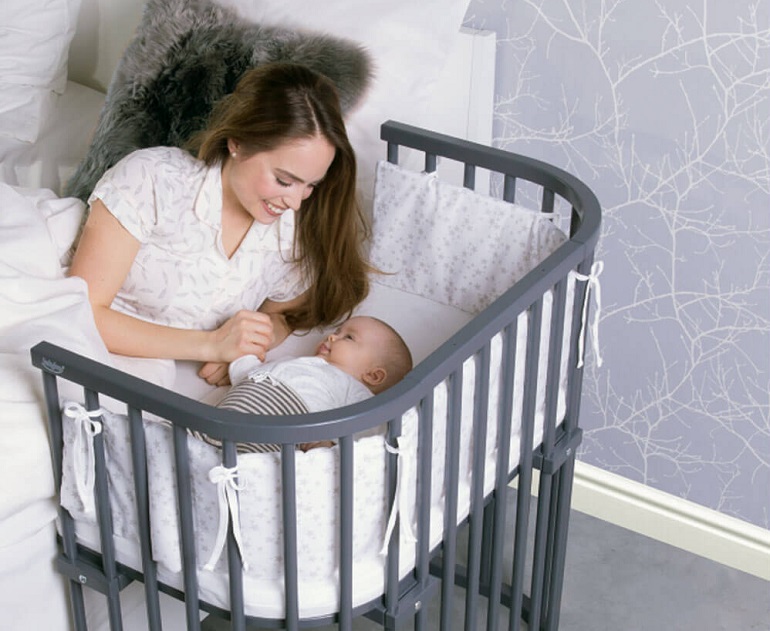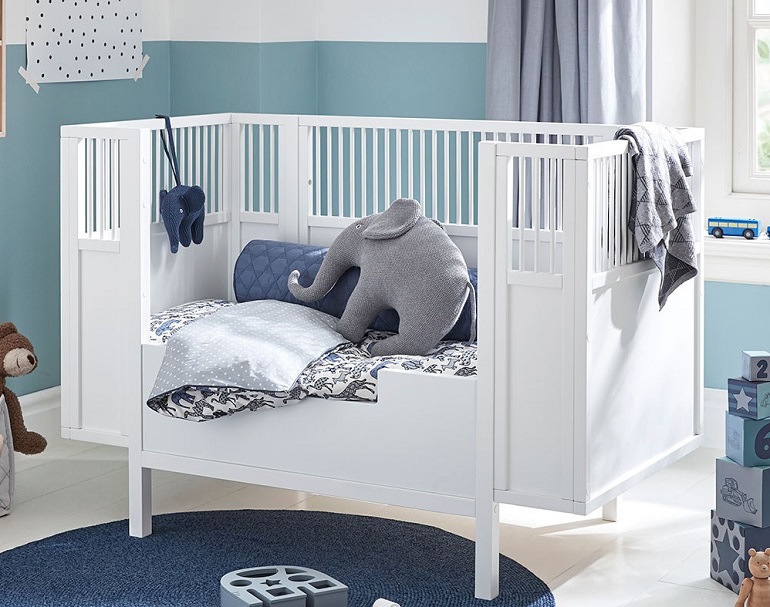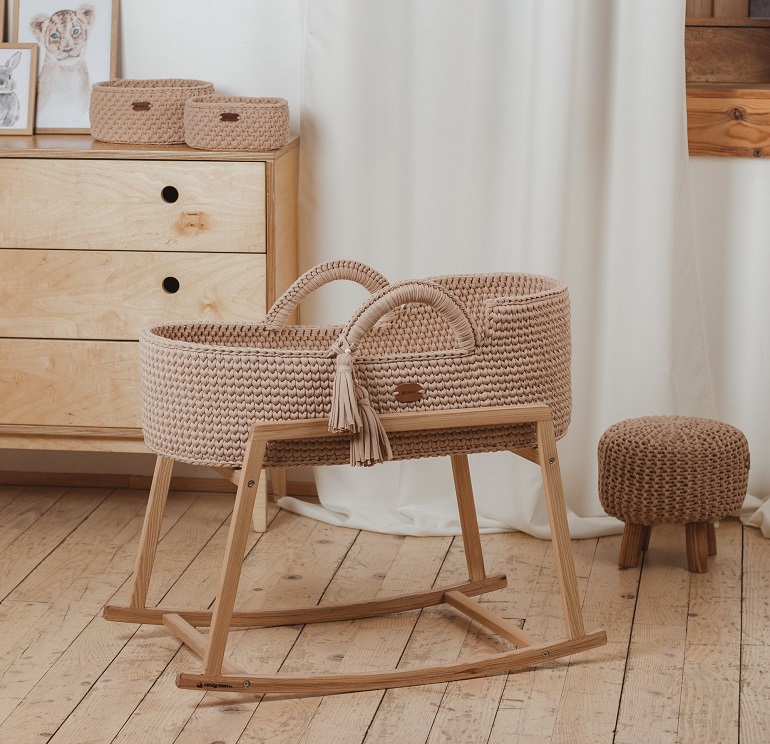There are many things to do before your baby’s arrival, but the second most important thing to do after trying to prepare mentally for it, is to do all of the necessary shopping. From choosing the nursery decor to the diapering equipment, it’s easy to get caught up in the long checklist and must-have baby essentials.
However, where your newborn will sleep is one of the most important decisions you will have to make as your baby will spend a significant time of their first 12 months sleeping. After all, good sleeping habits are essential for your baby’s physical and mental well-being. The sleep environment – where your child sleeps, the sort of bed, the type of mattress, and so on – is a crucial aspect of developing appropriate sleeping patterns. So whether your infant will sleep in a cot, co sleeper, or a Moses basket, will depend on your needs as a parent too.
Co-sleeper

According to pediatricians, the safest spot for a baby to sleep in the first 6 months, when the danger of sudden infant death syndrome (SIDS) is at its highest, is on their back in their own separate area. However, try making a mummy sleep through the night if her child is not within an arm’s reach. Luckily, there are co-sleepers. With straps that attach around the bed, a baby co sleeper in bed is the perfect investment if you want to provide a separate sleep surface for your newborn while keeping them as close as possible.
A bedside co sleeper attaches to the frame of your bed on one side, allowing you to lie next to your baby at night. The attached side of the sleeper is usually lowered to let you view and reach for your child. They’re also known as side-sleepers or beside sleepers, but the main distinction is that you’re not sharing a sleep surface or bedding. You and your infant can take advantage of the calming effects of closeness while minimising the hazards connected with bed-sharing.
Having your baby within arm’s reach also makes night feedings much easier for new moms. This is especially helpful if you had a difficult birth and find it burdensome to get out of bed to feed. Co-sleepers attach to the side of your bed, allowing you to reach over instead of getting up and wandering around. Some also function as a Moses basket, providing you with other resting alternatives away from the bedside.
Baby Cot

A baby cot is more spacious and expensive than a co-sleeper or Moses basket, but it has a slightly longer lifespan of use, lasting approximately 6 months. However, once your kid is mobile, they should not be placed in a crib. Because of its limited lifespan, it might be an expensive investment unless you want to use it for future children or sell it afterwards.
Most bedside cots feature adjustable heights for a nearly perfect fit on most bed frames, but if your bed is unusually low or high, double-check the specifications. Check the cot’s size and if it will fit next to your bed while enabling you to simply and safely get in and out. This is especially crucial in the first few days and weeks following childbirth when your body is still healing.
The most significant new requirement for this bed type is the presence of a 120mm high barrier around the sides of the cot. This is mostly imposed to prevent your baby from rolling off their own mattress onto yours. This implies that modern bedside cots cannot have completely drop-down sides, instead, many now have ‘half-height’ walls. This allows your infant to sleep close to you, with the cot aligned with your bed, but their mattress will be sunk a bit lower, giving a more protective barrier.
When you bought your first bedroom mattress, you’ve probably realized how important a good night’s sleep is by following a step by step guide on how to buy the right one. So buying a baby’s mattress should make no difference and should be approached with the same level of commitment. One of the most important things to remember is that the mattress must be firm, flat, and breathable. Soft sleeping surfaces can be a concern for suffocation and raise your baby’s risk of SIDS.
To be considered breathable, air must travel through the permeable sleep surface of the mattress. Free airflow is critical not just for your baby’s comfort, but also for their health. You don’t want your baby’s face to come into contact with anything that isn’t breathable. Baby lungs are small, and newborns are unable to communicate when they are uncomfortable or in pain, therefore a baby lying face down on an unbreathable mattress cannot communicate that he or she is straining to breathe.
Moses Basket

A Moses basket is recommended for a baby up to 3-4 months old, however, this can be extended depending on your baby’s development. Once your baby begins to move and pull themself upright, a Moses basket will no longer be a secure sleeping nest for your little one. Because of its limited use, this basket may seem like a rather pricey item if you’re going for a first-hand purchase.
The majority of baskets are weaved from palm, but maize, cornhusk, and the more durable and pricey wicker are also available. A new Moses basket normally includes a foam mattress, bedding set, and occasionally a hood, so there are no extra charges. You may wish to purchase an additional stand to position the basket at a more convenient level near the bed.
Carrying handles are a crucial feature since they allow you to carry the basket about the home while keeping your infant nearby. Make sure that the handles are robust enough to hold the basket with one hand and that they will fold down the outside of the basket without flopping over your infant.

